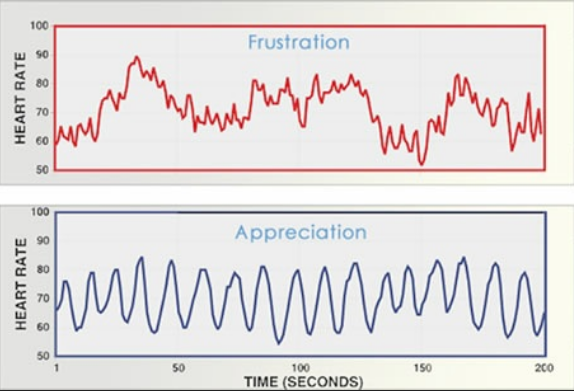My first ever hero was Dr Fred Luskin I remember stumbling across his video “the psychology of forgiveness” in a particularly low point in my life. At that time I began playing ‘YouTube Roulette’, it’s like Russian Roulette but all positive (see explainer at the bottom of this article) because you end up with a surprising video after rolling that virtual dice a few times.
On this dark day I ended up at Dr. Fred’s video door step and I’ve been a fan ever since. The sentence that blew me away was this..
“We set out to prove in our secular way that the practice of forgiveness was health enhancing”. Dr. Fred Luskin
This was a shock. At that time I had no idea there was such a thing as a science of forgiveness, or happiness or even of any of those intrinsic human traits that make us all so fascinating and unique. What immediately ran through my mind was firstly, how could forgiveness have a science behind it and secondly, how on earth can forgiveness not only enhance your life but change it?
It turns out that forgiveness improves your health across the board, it helps your heart, it can potentially increase your immunity to long term stress and much more. The proof is unequivocal and Amanda Chan’s Huffington Post article is a great quick summary of these benefits.
Dr Fred in fact, started his career in the area of heart research and it was here that he began to see the physical effects of our emotional states. His journey lead him to understand the power of processes such as forgiveness.

What I really love about Dr. Fred is the fact that he is a brave person. He doesn’t just preach his message from an academic ivory tower, he has taken his science to places like Northern Ireland to work with families on both sides of that bitter divide, to teach the power of forgiveness. He has changed lives in some of the most conflict-ravaged places in the world. He is a person of action.
So to make the power of forgiveness practical and tangible, I wanted to share one process that I’ve repeated more than a couple of times in the last few years, that has profoundly affected my life. It is a process I wish every adult practised, not only is it good for you, I know it also increased my humility, clarity, courage and empathy and here it is…
Forgiving Yourself
What I learned from Dr. Fred was the importance of firstly looking within and forgiving ourselves for the many events of shame, hurt and unworthiness in our lives that we unconsciously carry around every day.
“As tough as it is to acknowledge, you had to go through what you went through in order to get to where you are today….. Those dark times, accidents, tough episodes, break ups, periods of impoverishment, illnesses, abuses, and broken dreams were all in order.
They happened, so you can assume they had to and you can’t un-happen them. Embrace them from that perspective, and then understand them, accept them, honour them, and finally transform them”. Dr. Wayne Dyer.
One of the most powerful ways I’ve found to transform those dark periods in my life, was to firstly forgive myself. To let go of the ball and chain I had created for me. Only then could I clear the way to ask forgiveness from others, if there was an ‘other’ to ask.
The most surprising embodiment of Dr. Dyer’s quote above is the 1980’s action movie actor Dolph Lundgren. Not my first choice, I must admit, for my list of ‘top ten people to learn life lessons from’. However, his story shocked me, it reminded me yet again NEVER to judge a book by its cover. He talks about his abusive upbringing and the calamitous effect on his life up until five years before that Ted X video was shot. I encourage you to watch his Ted talk and listen to how he describes how healing his life began with healing himself, forgiving himself for how he has acted, then seeking forgiveness from others.
An exercise to release guilt and shame and to forgive yourself once and for all.
I was taught this process by an ex-Catholic nun (and they know a fair amount about forgiveness) many years ago and a similar process from Liz Gilbert in Eat, Pray, Love. So between the two of them I reckon we cover every belief system in the world! Before we start this process, here’s some simple agreements:
Be alone.
Be in nature if possible, without interruption (turn your phone off completely).
Bring a pen and paper (nothing else) and then begin.
This process is not intended to be a replacement for professional therapy. If there is deep trauma in your past that has not been dealt with yet, please seek professional help first.
Take five deep breaths and imagine your life as a long time-line, a piece of beautiful string, beginning at your birth to the present moment.
Begin at your first memory and then move forward from that earliest memory. At each point in that time-line seek those events and incidents that you may have avoided or buried for years, leave no skeleton in its closet.
Look at those events that bring deep shame and guilt as each come up on that time-line.
Look deeply at them one at a time, don’t avoid or skip past. Sit with the emotions, suppress nothing. Look at these incidents from different perspectives. Were you seeing everything accurately, were you able to respond differently, were you too small, too afraid to do anything other than what you did?
As each comes up forgive yourself for your frailties, give each ‘incident’ a heading, scribble it down on a piece of paper and only when you’ve truly forgiven yourself, write ‘forgiven’ next to that heading. (If, at any point, this process becomes unbearable, please stop and talk to a professional person).
Move on to the next incident, then the next, then the next until there is nothing left. Forgive yourself, forgive yourself.
Then burn that piece of paper, send it out to sea or tear it into tiny pieces and let it flutter off a bridge into a river below. Let it go, release it all and like the ripples in a pond, it will be gone.

As I journeyed through my time-line I remembered things that I’d forgotten but they popped up with a clarity that hit me like a baseball bat (I reeled from their impact). There were incidents, people, behaviours that I never thought at the time bothered me, but under a renewed spot light were filled with deep shame. And for some of those incidents, it took a long time to forgive myself and ask forgiveness through the “airwaves” of that ‘other’ person too.
Often I found I judged myself as a child by the standards of an adult and had to let go of that unfair judgement. Sometimes I saw for the first time how much pain I may have caused in my own selfishness and accepted responsibility for that pain, then forgave myself for it too and asked forgiveness of others.
There is a cleansing in this. This is not about judgement but about accepting our humanity. It’s about letting go of baggage that is directly responsible for the unconscious thoughts “I am not good enough”, “I don’t deserve this”, “I am not enough”. I realised that without the ability to forgive ourselves for our shared human frailties, we by default judge ourselves in some way as unworthy.
“Wholehearted living is about engaging in our lives from a place of worthiness…..I am enough….Yes I am imperfect, vulnerable and sometimes afraid, but that doesn’t change the truth that I am also brave and worthy of love and belonging”. Brene Brown, ‘Daring Greatly’.
I have come to understand that to live a meaningful life, a successful life in every respect, means embracing the process of self-mastery. Or as Abraham Maslow called it ‘self-actualisation’. This is an inside-out journey and like all great hero’s journeys it comes with dark as well as light, joy as well as sadness, shame as well as courage. All have their place.
So try this exercise. Treat it with reverence because in doing so, you are treating yourself with reverence too.
YouTube Roulette Explained 🙂
Imagine instead of a gun in your hands you have YouTube, you put in a random positive search term (like inspiring video), then click on a video at the top of the results page but don’t watch it, instead you quickly look down the right hand side of the page, click on a random video and watch that. Sometimes you do this process just once before watching a video, sometimes three, four up to six times… it never ceases to amaze me where you end up.

